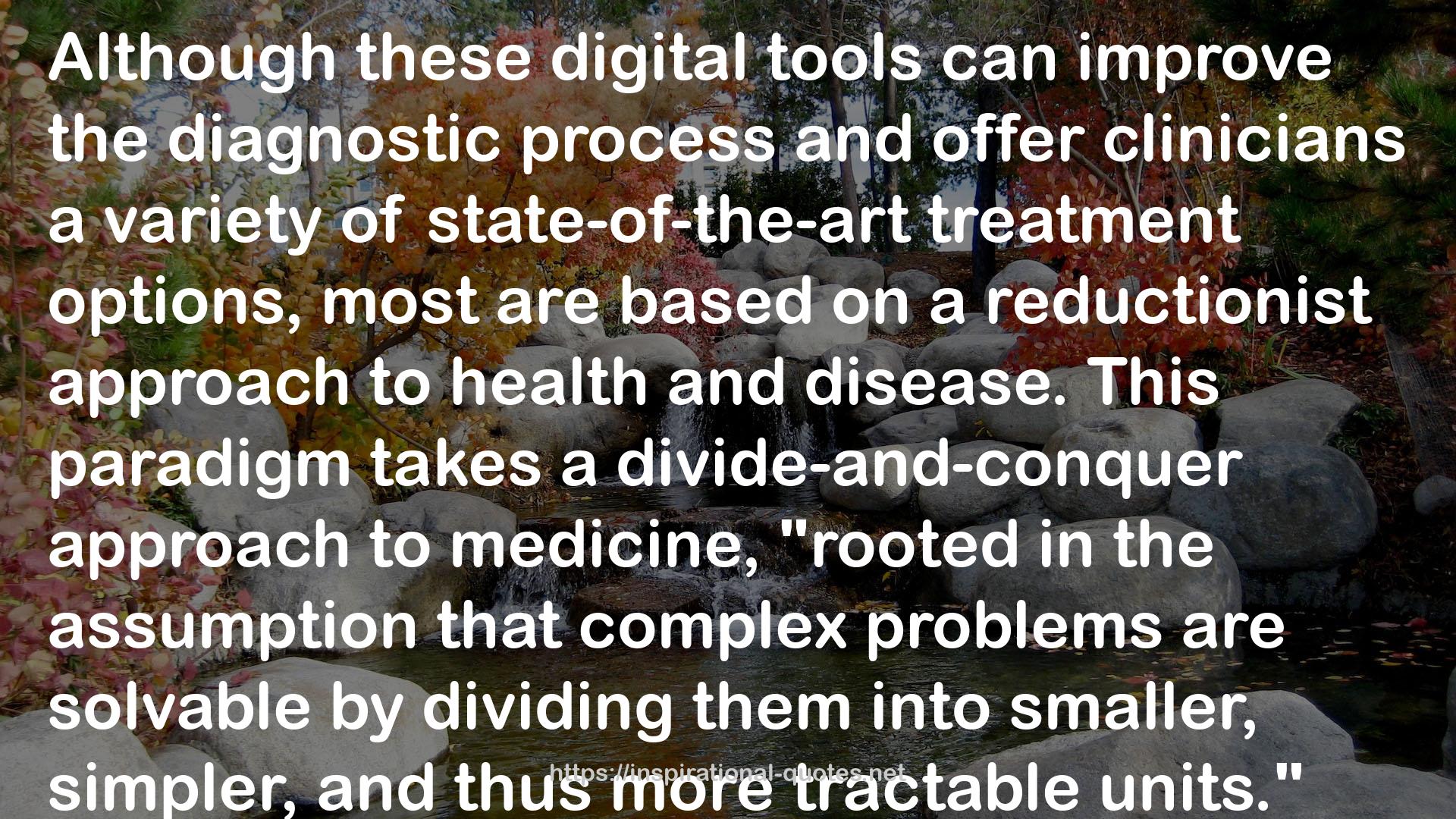" Although these digital tools can improve the diagnostic process and offer clinicians a variety of state-of-the-art treatment options, most are based on a reductionist approach to health and disease. This paradigm takes a divide-and-conquer approach to medicine, "rooted in the assumption that complex problems are solvable by dividing them into smaller, simpler, and thus more tractable units." Although this methodology has led to important insights and practical implications in healthcare, it does have its limitations.
Reductionist thinking has led researchers and clinicians to search for one or two primary causes of each disease and design therapies that address those causes.... The limitation of this type of reasoning becomes obvious when one examines the impact of each of these diseases. There are many individuals who are exposed to HIV who do not develop the infection, many patients have blood glucose levels outside the normal range who never develop signs and symptoms of diabetes, and many patients with low thyroxine levels do not develop clinical hypothyroidism. These "anomalies" imply that there are cofactors involved in all these conditions, which when combined with the primary cause or causes bring about the clinical onset. Detecting these contributing factors requires the reductionist approach to be complemented by a systems biology approach, which assumes there are many interacting causes to each disease. "
Image for Quotes

Reductionist thinking has led researchers and clinicians to search for one or two primary causes of each disease and design therapies that address those causes.... The limitation of this type of reasoning becomes obvious when one examines the impact of each of these diseases. There are many individuals who are exposed to HIV who do not develop the infection, many patients have blood glucose levels outside the normal range who never develop signs and symptoms of diabetes, and many patients with low thyroxine levels do not develop clinical hypothyroidism. These "anomalies" imply that there are cofactors involved in all these conditions, which when combined with the primary cause or causes bring about the clinical onset. Detecting these contributing factors requires the reductionist approach to be complemented by a systems biology approach, which assumes there are many interacting causes to each disease." style="width:100%;margin:20px 0;"/>